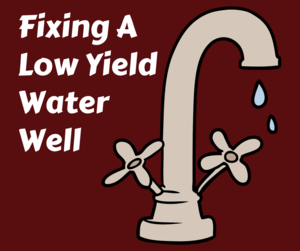CALL TODAY 1-800-441-6281
CALL TODAY 1-800-441-6281

Drinking Water Standards and Purification Methods
- Tags:
- water treatment
We’re all aware of the importance of healthful living. One area of critical importance is the water we drink. Many homeowners have experienced issues from “boil to drink” warnings to elevated bacteria cryptosporidium outbreaks. America’s aging infrastructure can sometimes fail, leaving us unsure of the safety of our water.
In 1974, Congress passed the Safe Water Drinking Act establishing drinking water standards, and enforcement procedures to ensure a safe water supply. Water systems across the country test municipal water supplies and publish the results for homeowners. Today, technology has improved to the point where homeowners have options for ensuring the safety of their water supply.
A recent CDC publication “The Guide to Drinking Water Treatment Technologies for Household Use"outlines the purification technologies available to homeowners. Let’s look at several options currently available.
Water Filtration Systems
With any technology, it’s important to do your due diligence and make sure you are getting what you need from your investment. Systems effectiveness and the contaminants they alleviate vary widely. Before installing any household water treatment system, make sure to contact your local health department’s environmental health group for consultation and use experienced contractors to perform the work.
Filtration
Filtration systems use an absorbent system designed to allow contaminants to adhere to the medium for removal. Water filtration effectiveness depends on the amount, size and charge of the contaminant material. Water may need to be chemically pre-treated before filtration and many systems utilize a multiple stage process.
Microfiltration
Microfiltration removes contaminants as small as .05 microns in size. It’s highly effective at removing certain protozoa and bacteria. Microfiltration is not effective for removing viruses or chemicals.
Ultrafiltration
The filter has a much smaller pore size, ranging from .001 - .05 microns in size. It is highly effective at removing protozoa and bacteria and moderately effective for removing viruses. It has a low effectiveness for removing chemicals.
Nanofiltration
The finest pore size, ranging from .008 - .05 microns. Nanofiltration is extremely effective at removing protozoa, bacteria and virus contaminants and moderately effective at removing chemicals.
Other Water Treatment Options For Water Contaminant Removal
There are several other highly effective technologies for removing contaminants to reach the highest drinking water standards, including:
Reverse Osmosis
By reversing the flow of water through a series of filters including a semi-permeable membrane, reverse osmosis is highly effective at removing all types of contaminants including protozoa, bacteria, viruses and most common chemical contaminants.
Distillation Systems
Distillation is a process of heating water to boiling, then condensing and collecting the vapor to produce pure water. It is very highly effective at removing protozoa, bacteria, viruses, and most chemical contaminants including many organic chemicals.
These technologies can provide safe, clean drinking water for your entire family. Options include “point of use” systems designed to provide purified water at a single source, and “point of entry” systems to provide purified water throughout your home. Systems can also be combined or used in conjunction with each another to increase effectiveness.
If you’re considering adding a purification system to improve your drinking water standards it’s best to consult a professional. They can explain your options and the cost of installation. Installing a treatment system to ensure the highest drinking water standards for your family is not only affordable it’s a great decision! Contact the water treatment professionals at Skillings & Sons to get answers to your well water contamination problems.

